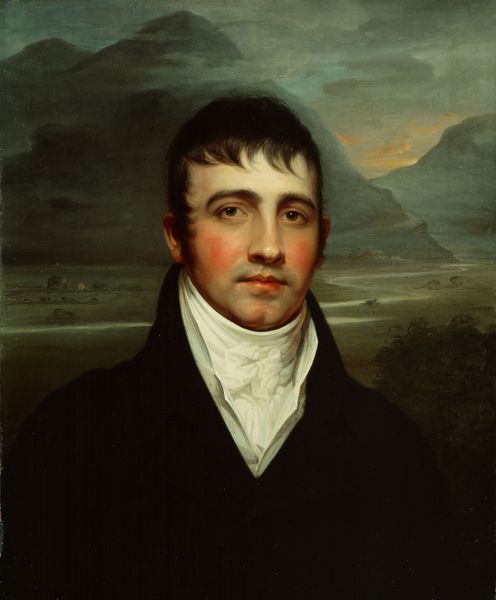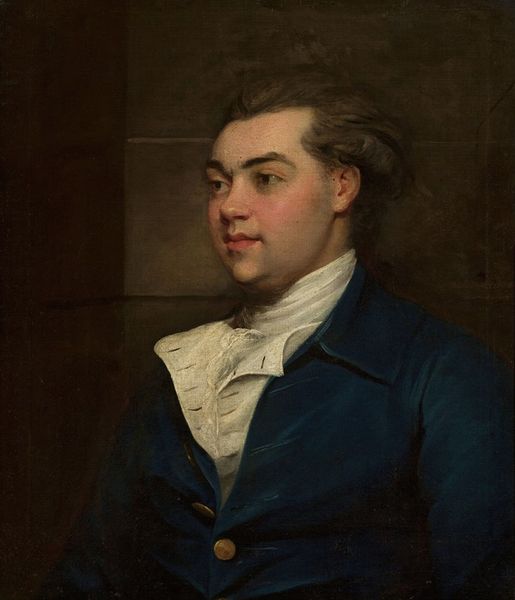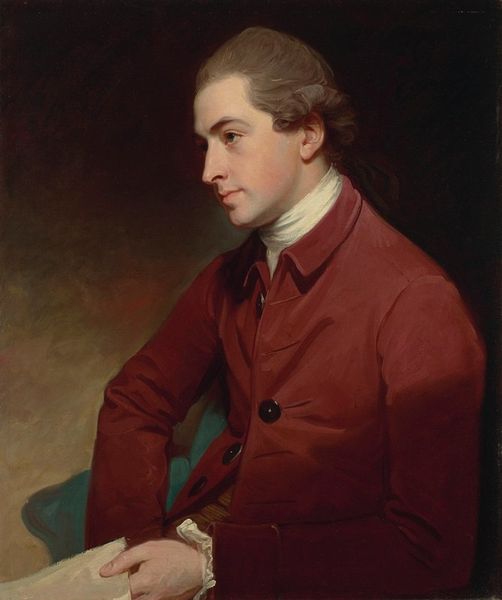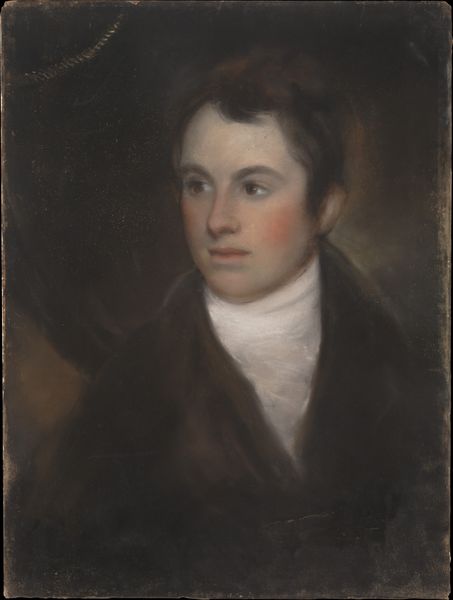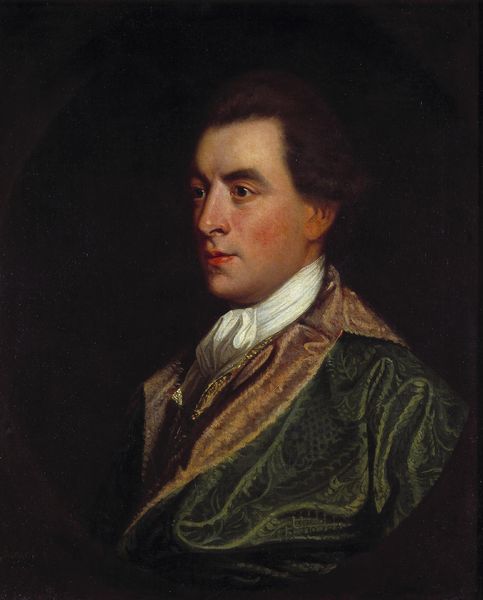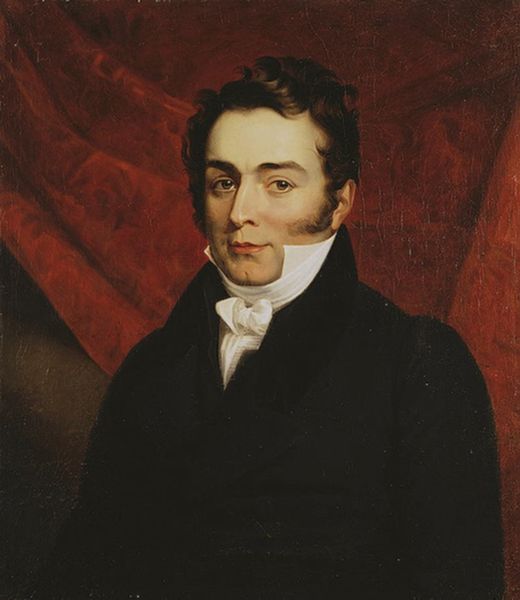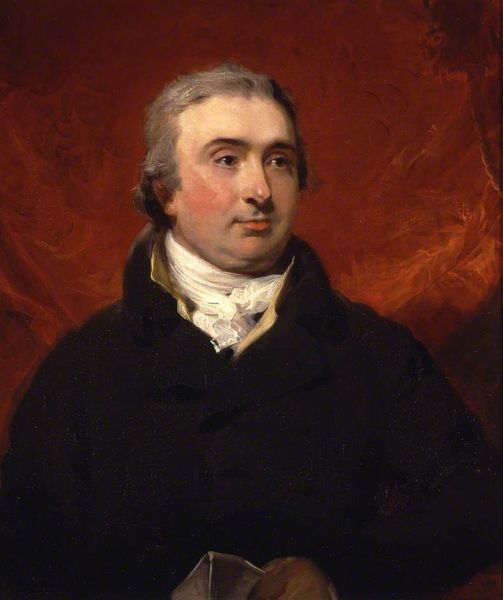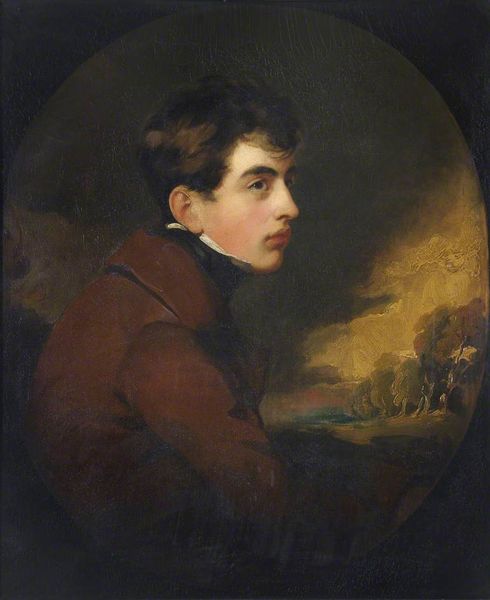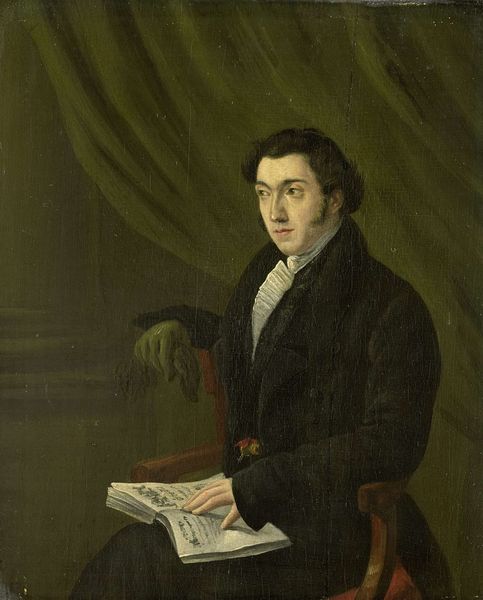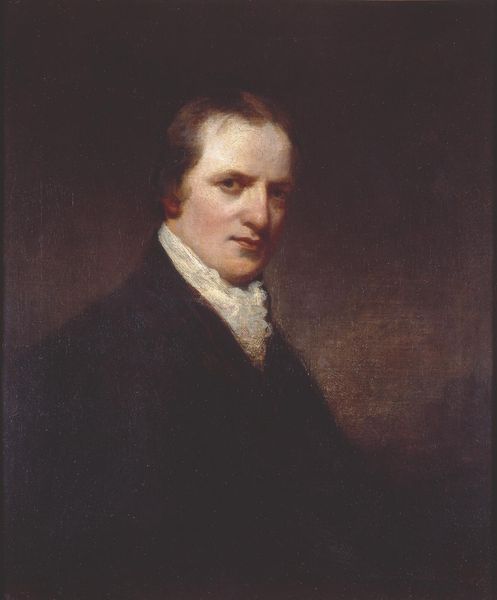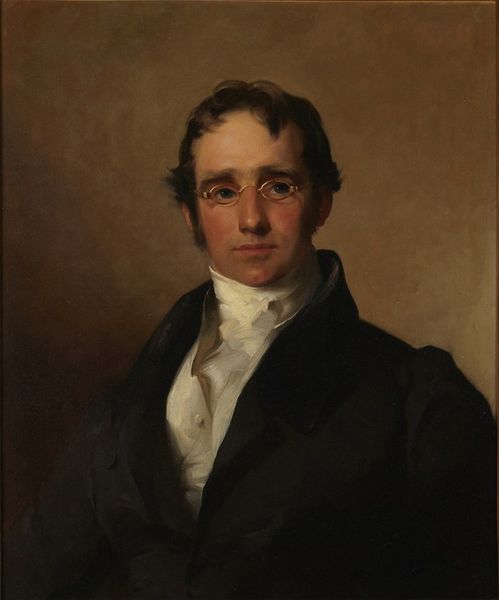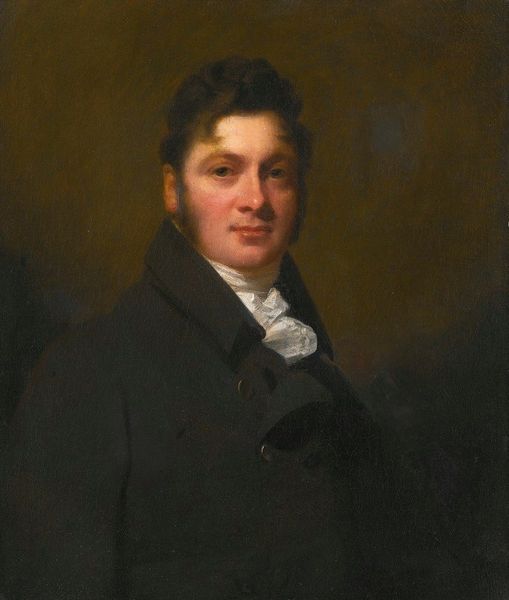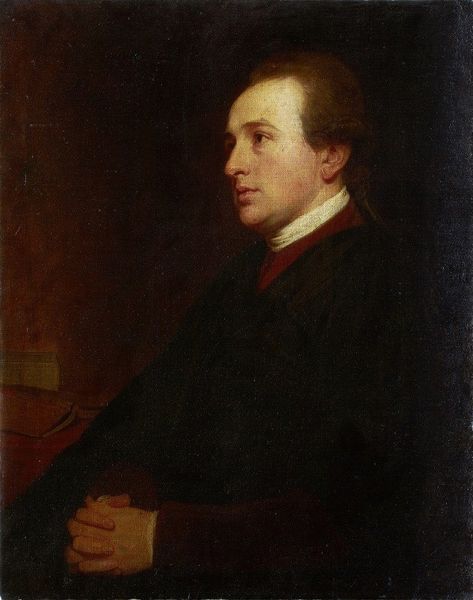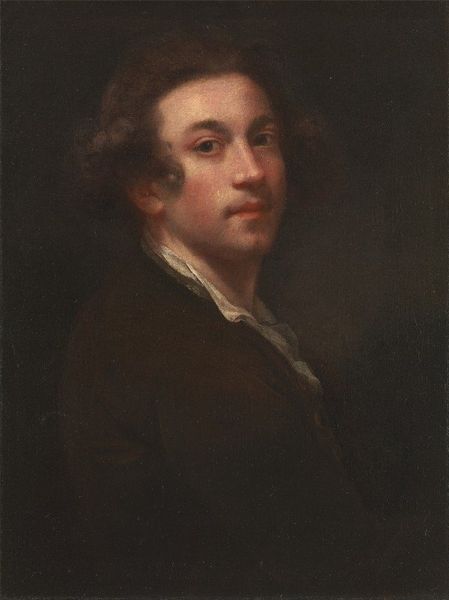
painting, oil-paint
#
portrait
#
figurative
#
portrait
#
painting
#
oil-paint
#
landscape
#
figuration
#
romanticism
#
history-painting
Copyright: Public Domain: Artvee
Curator: Good morning. Today, we're considering John Linnell's "John Gage," painted in 1817. It’s an oil painting that presents a fascinating figure against a backdrop of what appears to be an English landscape. Editor: My first thought? Intensely observant. The subject’s gaze is so direct. It's also darker than I expected; the palette feels very subdued, almost as though the portrait is emerging from a deep shadow. Curator: Yes, the subdued palette contributes to a sense of seriousness, quite characteristic of portraiture of that era. What I find compelling is how Linnell, though known for landscapes, uses a landscape element here. See the glimpse of rolling hills just behind Gage? Editor: It’s a curious contrast. The landscape, typically a symbol of freedom and nature, is reduced to almost a theatrical backdrop. Is it intended to hint at Gage's own connection to the land or perhaps an idealized vision of English identity at the time? The slightly obscured background behind him really brings focus on the sitter and enhances his individual presence, though, for me. Curator: I think that's a very astute observation. Considering the socio-political climate of England during the early 19th century, such references weren't accidental. It situates Gage within a certain social strata and emphasizes themes of rootedness and belonging, essential virtues espoused during the Romantic era. And how about Gage’s hand posture? Almost a gesture of presenting himself to be judged or to make a demand? Editor: Precisely. The hand, along with his carefully arranged attire and piercing stare, certainly suggests an awareness of his public persona. He's curating his own image, isn’t he? Do we know anything about who John Gage was and the context around why this portrait was commissioned? Curator: Unfortunately, verifiable records on John Gage himself are sparse. But what is revealing is that Linnell, later in his career, often painted portraits of prominent figures involved in artistic and intellectual circles. The context would undoubtedly shape its reception. Editor: I see your point. Thinking about it as a calculated image presented to a specific audience changes how I perceive it. No longer just a face, but a statement. Curator: Indeed. The portrait invites us to think about the relationship between individual identity and collective history. Editor: Well, considering the symbolism layered within the portrait, it has sparked some thoughts regarding what one aims to transmit with their social projection. Thanks for sharing.
Comments
No comments
Be the first to comment and join the conversation on the ultimate creative platform.
